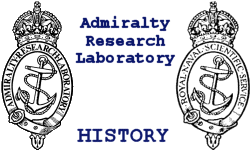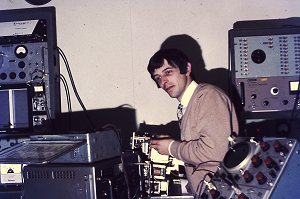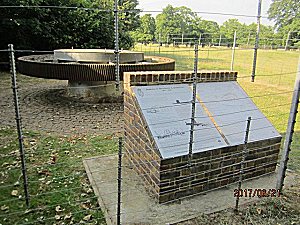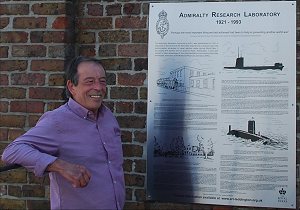Introduction
ARL’s remit as the centre for Royal Naval
science was first to determine, and then develop expertise in, the underlying
science of virtually all aspects of Royal Navy operations, and subsequently
master the many processes involved in ensuring that science is applied
effectively. The fact that ARL quickly became effective in its role is a
remarkable testimony to the calibre of scientists, experimenters, technicians
and engineers that were attracted to the challenge, over the years.
Indeed, rapid progress was made as ARL developed
the capability of constructing bespoke, high-technology test and measurement
equipment for themselves. Generally, the specially-made equipment supported the
process of problem solving by identifying the nature and cause, as a prelude to
ARL evolving a practical and invariably ground-breaking solution.
As a consequence, the greater proportion of
modern naval warfare technology stems from the research and problem solving
conducted by the staff of the Admiralty Research Laboratory, Teddington
over the period 1921 to 1977. For example, some of this work enabled major
advances in submarine stealth, weapons and sonar. These advances included
streamlining, machinery noise reduction, faster and quieter Pump-Jet propulsion,
and Towed Array long-range Surveillance (passive) sonar. Certain aspects of
these work areas remain highly classified!
Site Expansion
ARL underwent two expansions in the Teddington area.
In 1939 further Crown land within Bushy Park was
acquired for a new laboratory block, officially named "Centre Block" it became
known as 'Fire Control', and beyond it was built the 'Orlit Hut'. In 1945 ARL
acquired a site in Bushy Park known as Upper Lodge that had been used by the Air
Ministry during WWII. See menu for further details.
What happened to ARL
In 1977-8 the majority of the underwater
acoustics work was transferred to Portland, Dorset. This move came in the wake
of a renaming of the establishment to "Admiralty Marine Technology
Establishment [ARL]", later just: "AMTE Teddington".
The main
site in Queens Road was closed in 1988 and by then what was formerly ARL
was simply: "Admiralty Research Establishment (ARE) Teddington".
With the
formation (in 1991) of the tri-services Defence Research Agency, the
remaining former ARL site at Upper Lodge became "DRA Teddington", only to
be closed on Christmas Eve 1993 bringing to a complete end 72 years of
ground-breaking scientific research that was of immense benefit to the Royal
Navy.
|
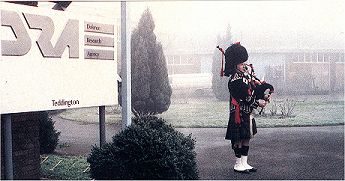 |
At midday on 23rd Dec 1993
Pipe Major John Haynes (77th Highlanders), RN Piping Society, and former Site
Manager piped the last staff from Upper Lodge.
Site Manager Brian Moses and Head
Patrolman George Bullen locked the gates.
For the record, John piped "The Lament For The Dead". |
‘Perhaps the most important
thing we had achieved had been to help in preventing another world war'
-
from the journal of Alec Mitchell, final Director of the Admiralty Research
Laboratory, and Hydrodynamist that led the development of Pump-jet Propulsion.






